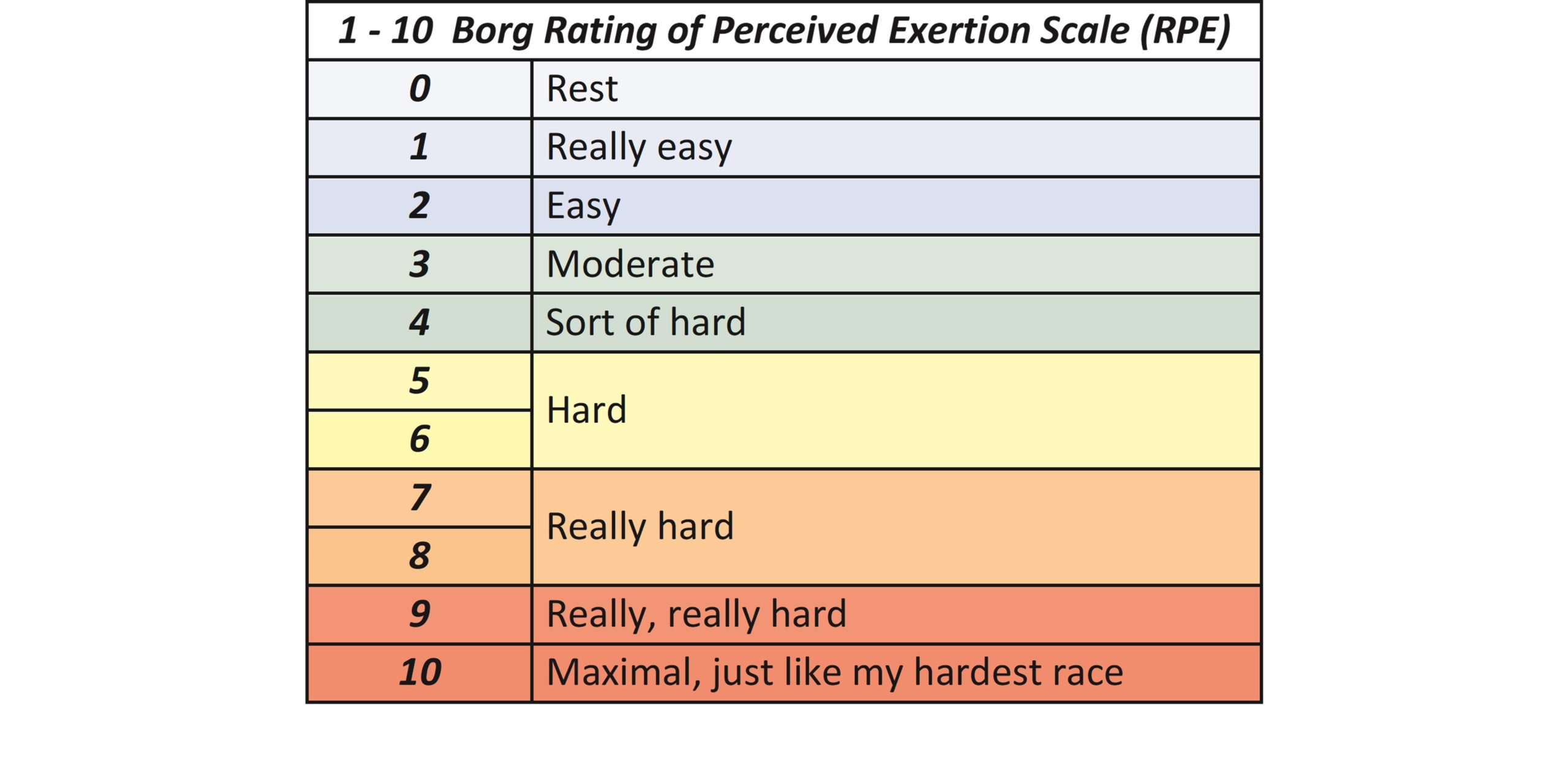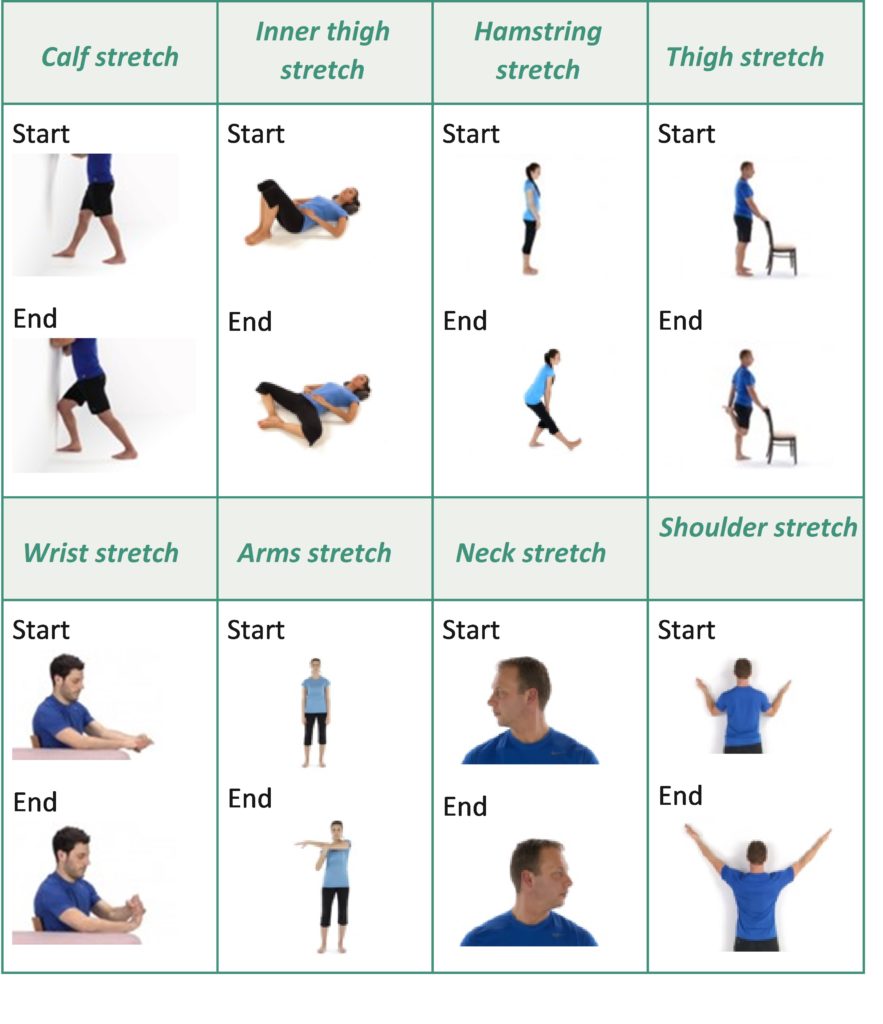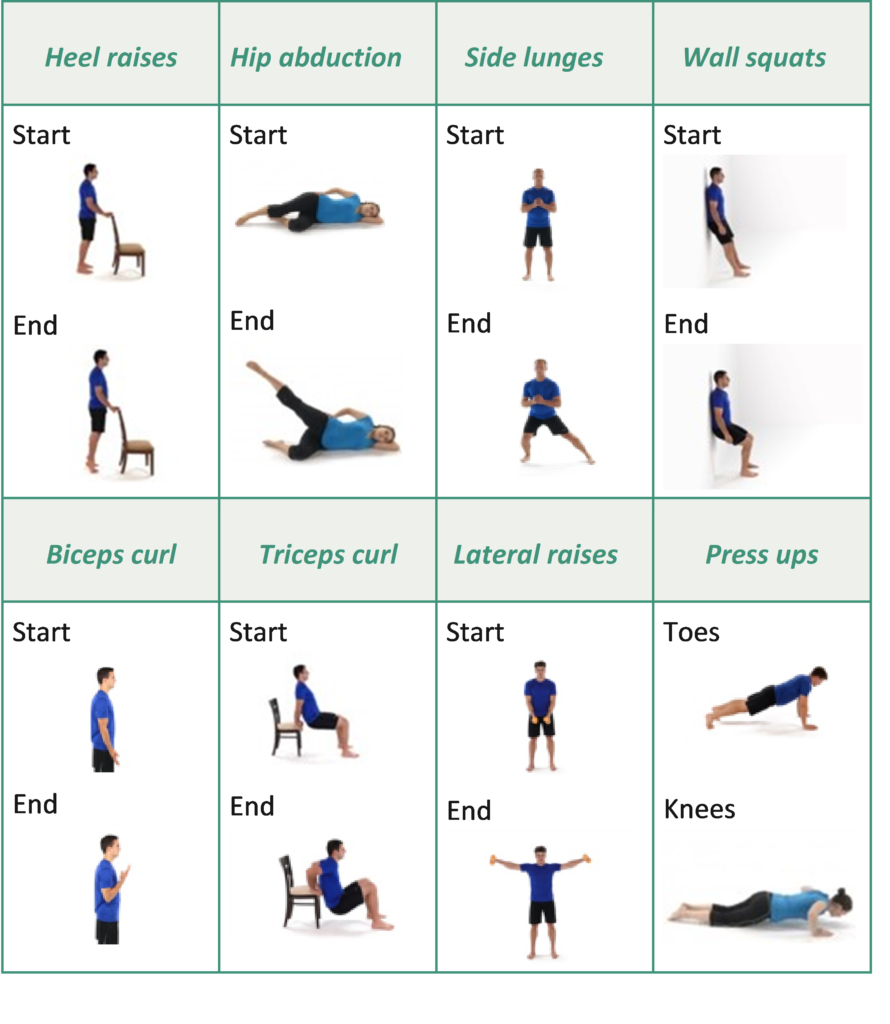Exercise & physical activity
Spending time in hospital and being ill at home with COVID-19 over a long period of time can result in a significant reduction in your muscle strength and endurance.
Exercise is very important for regaining your muscle strength and endurance BUT this needs to be safe and managed alongside other Long Covid symptoms.
Activities around the house and gentle short walks whilst pacing are considered safer whilst you are recovering before returning to exercise.
Using the BORG scale will help you regulate your exertion and develop a good understanding of the level of activity or exercise that you should be working at. It is a good tool to help you understand any symptoms of breathlessness you might have.
Staying active during your recovery will improve:
- The strength of your breathing muscles, heart and circulation.
- The strength of your arms and leg muscles.
- Your energy levels.
- Your wellbeing, independence and confidence.
Staying active during your recovery will reduce your:
- Anxiety or depression.
- Stress levels and blood pressure.
- Risk of falling by improving your balance.
- The risk of developing other problems associated with bed rest such as chest infections, bed sores, blood clots, reduced mobility and weakness.
How to use the BORG scale during activity and exercise
The BORG scale diagram is shown below. You can use it to understand how hard you are working and your feelings of breathlessness whilst undertaking any physical activity and during exercise.
This scale is based on how much effort your breathing takes at rest and during activity or exercise.
Using this scale during activity and exercise will really give you guidance and a greater understanding about the safe level to challenge yourself.

Exercise and fatigue
If you are suffering from on-going fatigue, please seek advice from a physiotherapist before getting back to ‘strenuous’ exercise.
Fatigue and exercise need to be carefully considered and phased to prevent Post Exertional Malaise (PEM) and a ‘relapse’ of your symptoms. The return to exercise section on the “your COVID recovery” website is a good source of information.
PEM symptoms include a marked physical and/or mental fatigue in response to increased activity/exercise and can be debilitating and cause a relapse.
The exhaustion felt may be immediate after the activity/ exercise or may be delayed by hours or days. Recovery normally takes 24 hours or longer and can affect your fatigue levels, concentration, sleep, memory and can cause muscle/joint pains and flu-like symptoms.
To avoid PEM, follow the advice in the fatigue management section on pacing of activities.
If you are experiencing fatigue symptoms after exercise, some find it helpful to:
- Monitor your heart rate as you exercise and introduce exercise gradually keeping at less than 60% of maximum heart rate.
- Monitor your rate of perceived exertion using the Borg Rating of Perceived Exertion Scale
| To calculate your maximal heart rate you subtract your age from 220 then multiply the answer by 0.6
(220 - age) x 0.6 = 60% of your maximal heart rate E.g. if you are 40 years old then 220-40 = 180, 180 x 0.6 = 108. During exercise you aim to keep your pulse at less than 108 beats per minute. |
You can monitor your heart rate by taking your pulse or you may have a phone or smart watch that can do this for you.
If you cannot confidently do this, then continue to use Borg Rating of Perceived Exertion Scale
Exercise and chest pain and /or a racing heartbeat
If you are suffering from chest pain, palpitations, severe breathlessness or feel faint then please seek advice from a health professional before starting any exercise programme.
Our team will ensure that you have had the necessary investigations prior to starting exercises.
If you have a diagnosis of any cardiac problems or autonomic nervous system problems such as Postural Orthostatic Tachycardia Syndrome, you may need a more individualised exercise programme than the suggestions in the following pages.
Phases of exercise
You should consider your return to exercise in 5 phases; the following sections describe these phases and give suggestions.
No exercise should be painful. If you experience pain, chest pain, feel faint or dizzy during exercise you should stop immediately and seek further advice from your GP or physiotherapist
Phase 1 - Preparation for return to exercise
Types of exercise: Gentle walking, breathing exercises, flexibility and stretching.
Breathing exercise example:
Relaxed tummy breathing
- Make sure you are in a comfortable position with your head and back supported and your shoulders and upper chest relaxed.
- Place one hand on your tummy – feel your tummy rise and expand as you breathe in and relax back down as you breath out.
- Rest and wait for your next breath to come.
- Breathe gently when practising; there should only be a slight movement of your tummy at rest.
Flexibility and stretching exercises

Phase 2 - Low intensity activity
Resistance exercises

Types of exercise: Walking, light household/garden tasks, light yoga.
Light Yoga is a form of stretching, breathing control and relaxation that has been found to be beneficial during your recovery from COVID.
Yoga is shown to assist with the lymphatic system that helps to:
- Remove toxins from the body.
- Increase flexibility in the thoracic region (where your heart and lungs are) that can become weak and stiff during illness and resulting inactivity.
Phase 3 - Moderate intensity aerobic and strength exercises
Types of exercise: Walking, introducing inclines, resistance exercises
Phase 4 - Moderate intensity aerobic and strength exercises with coordination and functioning skills
Types of exercise: Cycling, swimming, jogging, racket sports, Zumba classes, dance classes
Phase 5 - Return to your baseline exercises
You are now able to complete your usual pre-COVID regular exercise/activity regime, usually at a beginner level. You may need to take breaks or do shorter time periods initially.
Top tips:
- Plan to exercise 1-2 times a week to start with and notice the impact on your overall activity levels and symptoms.
- Build up either number of times you exercise per week or the intensity.
- Expect to stick at the same level for at least 7-14 days before attempting progression.
- Drop back a phase if you have difficulty.
- Only exercise if you feel recovered from the previous day and have no return of symptoms and no new symptoms.
- Choose exercises that you enjoy. You are more likely to do them, and they will help to improve your mental wellbeing.
- Exercises that you did prior to COVID may not be appropriate to your stage of recovery.
- Doing less intensity of the same pre-COVID activity may not always be the best way to approach your phased return to exercise. It can lead to you comparing yourself to your pre-COVID self.
Video links
